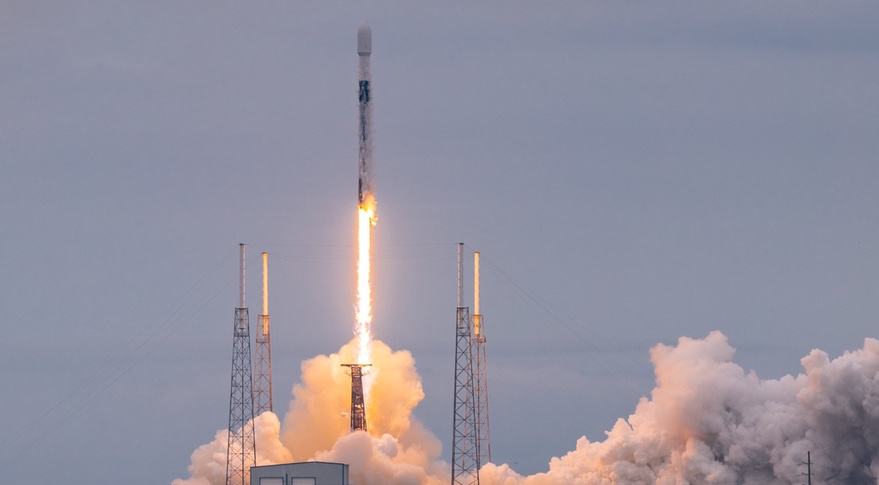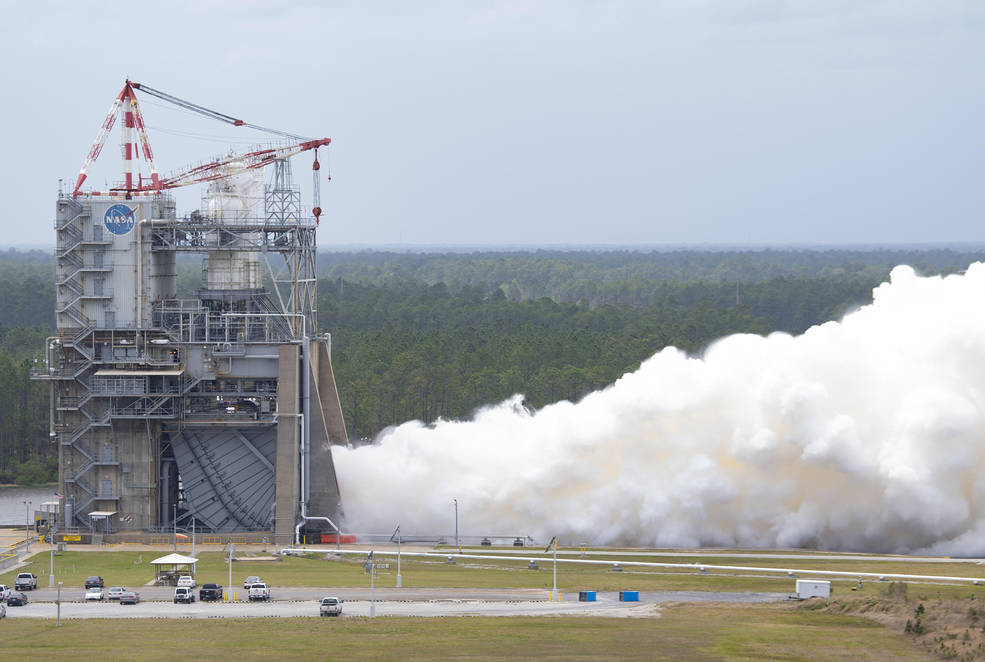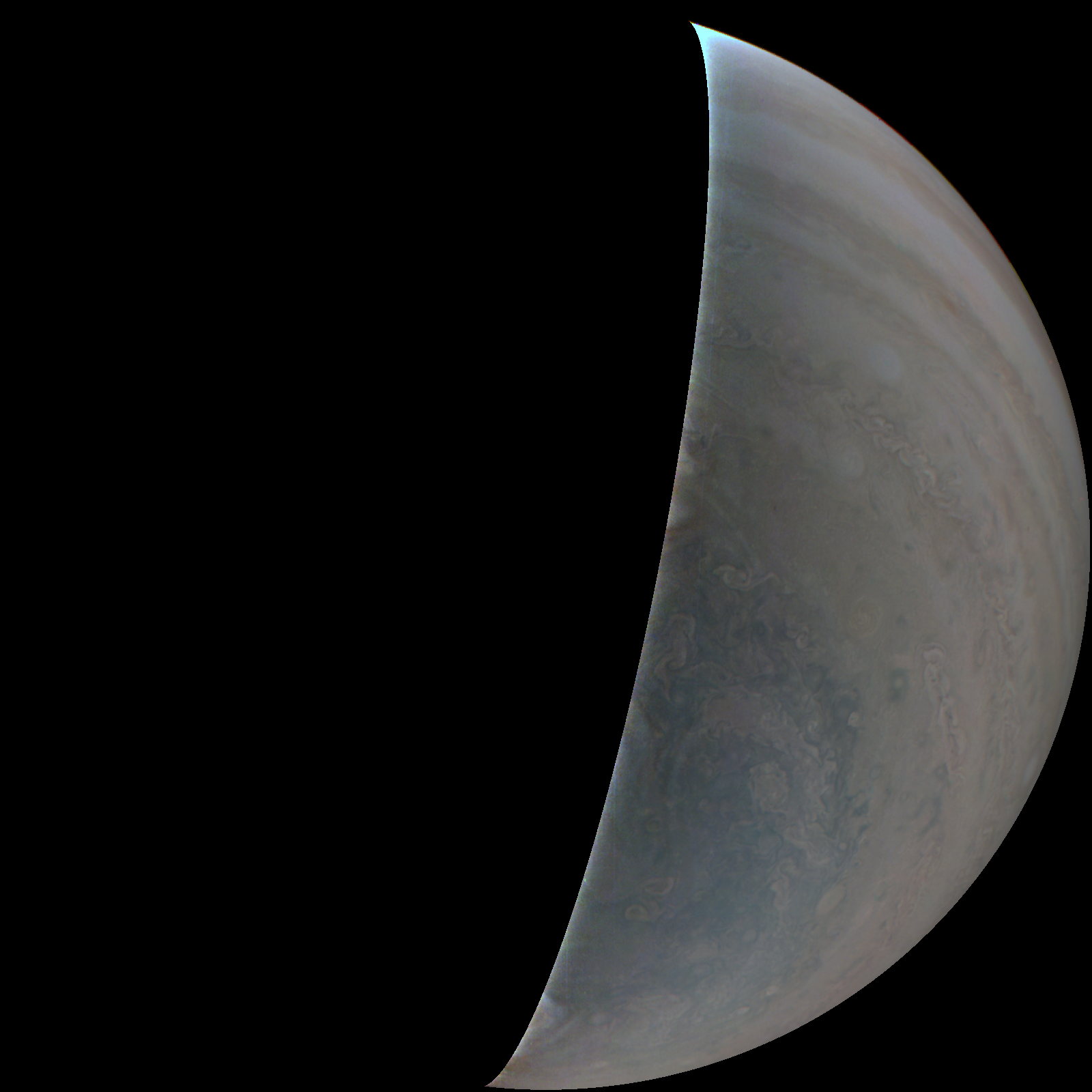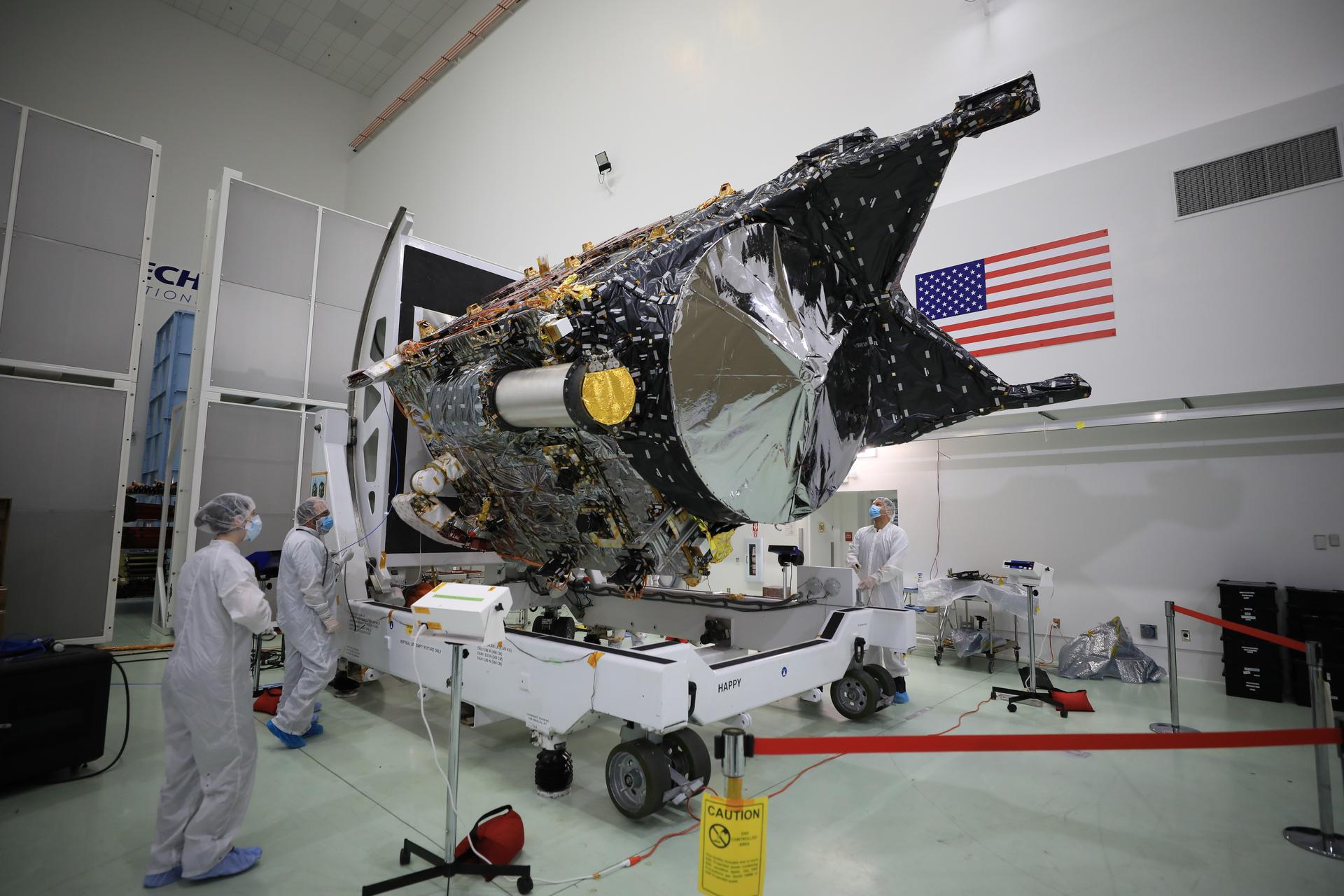Lynk Global finalizing ground station for direct-to-smartphone services
Original Publication Date: 2023-01-27 21:47

Lynk Global is close to completing a ground station in Hawaii. The Ka-band ground station is needed to route cellular signals Lynk’s satellites pick up from low Earth orbit. It is the first of dozens of ground stations the venture plans to deploy worldwide. Lynk currently has three of its pizza-boxed shaped commercial satellites in orbit.
SpaceX preparing for Super Heavy static-fire test
Original Publication Date: 2023-01-27 21:34

SpaceX could attempt a long-awaited static-fire test of all 33 Raptor engines in its Super Heavy booster. The test is one of the final technical milestones before an orbital launch attempt. SpaceX still needs a launch license from the Federal Aviation Administration before it can conduct a launch.
Satellite billed as the ‘future GPS’ begins key tests
Original Publication Date: 2023-01-27 20:03

NTS-3 is an experiment funded by the Air Force Research Laboratory. It will broadcast positioning, navigation and timing (PNT) signals from geostationary Earth orbit. The goal is to demonstrate next-generation PNT technologies for the U.S. Military.
L3Harris ‘optimistic’ Aerojet Rocketdyne acquisition will close in 2023
Original Publication Date: 2023-01-27 18:10

L3Harris announced agreement to buy Aerojet Rocketdyne in December. FTC last year blocked Lockheed Martin’s proposed $4.4 billion bid for Aerojet. L3Harris said it does not expect to face these same challenges because the combination with Aerojet would be a “horizontal move”
NASASpaceFlight.com
India launches a new ocean monitoring satellite on Saturday morning. The PSLV rocket delivered the EOS-06 spacecraft into a low Earth orbit. The mission, PSLV C54, lifted off from the Satish Dhawan Space Centre at 11:56 local time (06:26 UTC)
Commercial Archives
The Starlink 5-2 mission launched into the predawn darkness at 4:32 AM EST (09:32 UTC) on Thursday, Jan. 26, from Space Launch Complex 40 (SLC-40) at Cape Canaveral Space Force Station in Florida. The mission plans to fill out new “shells’ of Starlink satellites that link to the upcoming second-generation Starlink constellation.
International Archives
The Japan Aerospace Exploration Agency and Mitsubishi Industries have conducted the nation's first orbital flight of 2023. The mission saw an H-IIA rocket carry the classified IGS-7 radar reconnaissance satellite into a Sun-synchronous orbit. The launch window lasted just 61 seconds, closing at 01:50:21 UTC.
News – Spaceflight101

Russia's Rockot booster set to blast off from the Plesetsk Cosmodrome at 17:57 UTC with the Sentinel-3B multi-function satellite. Europe's Copernicus satellite fleet is gearing up for the arrival of its next addition on Wednesday with a Russian Rockot booster.
ISS Updates – Spaceflight101 – International Space Station

A veteran NASA spacewalker and an EVA rookie from Japan ended their week with nearly six hours of work outside the International Space Station. The restoration of the Station’s Mobile Servicing System started last year and continued in January to provide Canadarm2 with a new pair of grappling hands.
Featured – Spaceflight101

SpaceX Falcon 9 takes to the skies over Florida’s Cape Canaveral Monday afternoon. The flight-proven Dragon spacecraft will deliver science gear, supplies and maintenance hardware to the International Space Station. It is the first of at least six cargo ships inbound to the U.S. Segment of ISS this year.
Re-Entry: Long March 11 Rocket Body – Spaceflight101

The CZ-11 fourth stage used leftover propellant for a partial de-orbit maneuver, lowering its perigee to 120 Kilometers to significantly accelerate its orbital decay. It is reportedly built around a YF-50 main engine and conducts the orbital circularization after the three CZ-11 stages finish their job.
NASA’s Juno Team Assessing Camera After 48th Flyby of Jupiter

JunoCam is a color, visible-light camera designed to capture pictures of Jupiter’s cloud tops. The camera was originally designed to operate in Jupiter’s high-energy particle environment for at least seven orbits but has survived far longer. The spacecraft will make its 49th pass of Jupiter on March 1.
NASA’s Psyche Mission Continues Preparation for Launch in 2023

Psyche project is targeting an October 2023 launch on a SpaceX Falcon Heavy rocket. The spacecraft’s target is a unique, metal-rich asteroid also named Psyche. The asteroid may be the partial core of a planetesimal, a building block of rocky planets in our solar system.
NASA System Predicts Small Asteroid to Pass Close by Earth This Week

Asteroid 2023 BU will zoom over the southern tip of South America at about 4:27 p.m. PST. The asteroid will pass within the orbit of geosynchronous satellites. There is no risk of the asteroid impacting Earth. Even if it did, the asteroid would largely disintegrate harmlessly in the atmosphere.
Documentary Series: JPL and the Space Age

JPL and the Space Age is a series of documentaries about NASA's Jet Propulsion Laboratory. The series uses rare archival footage and interviews with many of JPL’s pioneering engineers and scientists. Each episode of JPL and the Space age was written, produced and directed by JPL Fellow and national Emmy Award-winning documentarian Blaine Baggett.
NASA’s Lunar Flashlight Team Assessing Spacecraft’s Propulsion System

Lunar Flashlight is the first interplanetary spacecraft to use a new kind of “green” propellant. The propellant, called Advanced Spacecraft Energetic Non-Toxic (ASCENT), is safer to transport and store than the commonly used propellants such as hydrazine. Other systems on Lunar Flashlight are performing well, including the never-before-flown Sphinx flight computer.
NASA Scientists and Satellites Make Sense of Earth’s Subtle Motions

JPL scientists are mapping where the Hayward Fault is creeping to better understand how much of it is likely to slip in the next large earthquake. Creeping faults are less likely to produce large earthquakes because the motion relieves much of the stress. JPL’s Zhen Liu is using InSAR data to study a different kind of motion in the earthquake-prone Pacific Northwest.
NASA’s TESS Discovers Planetary System’s Second Earth-Size World

Scientists have identified an Earth-size world, called TOI 700 e, orbiting within the habitable zone of its star. The world is 95% Earth’s size and likely rocky. Astronomers previously discovered three planets in this system, called TOi 700 b, c, and d.
